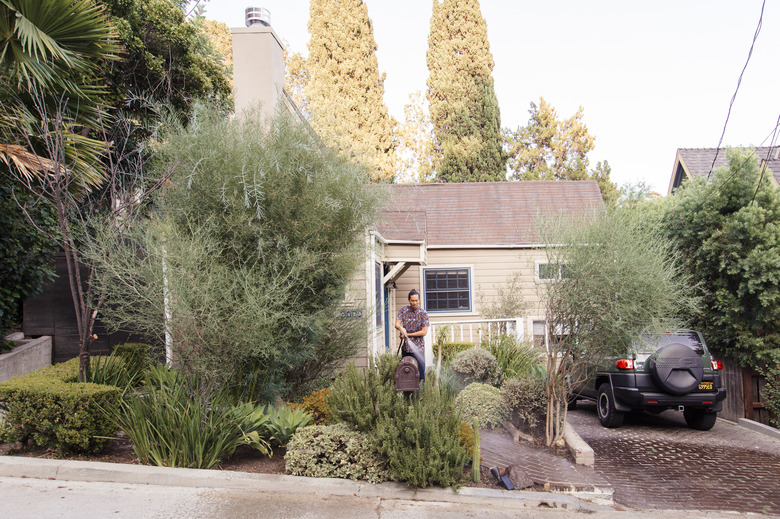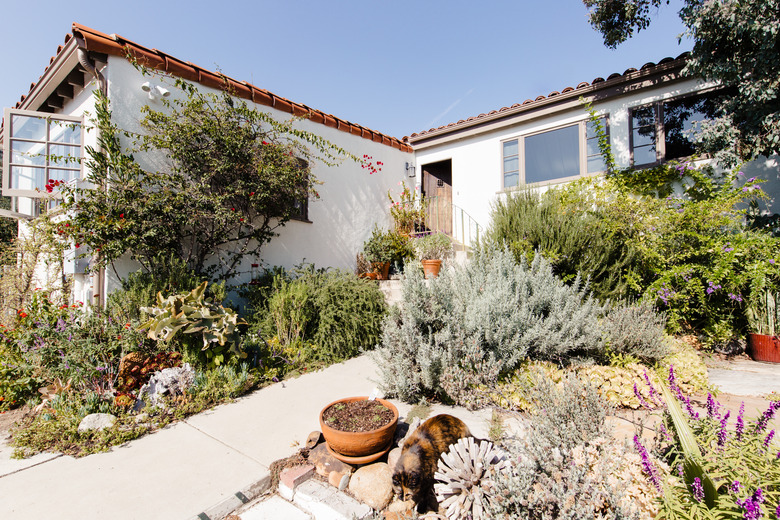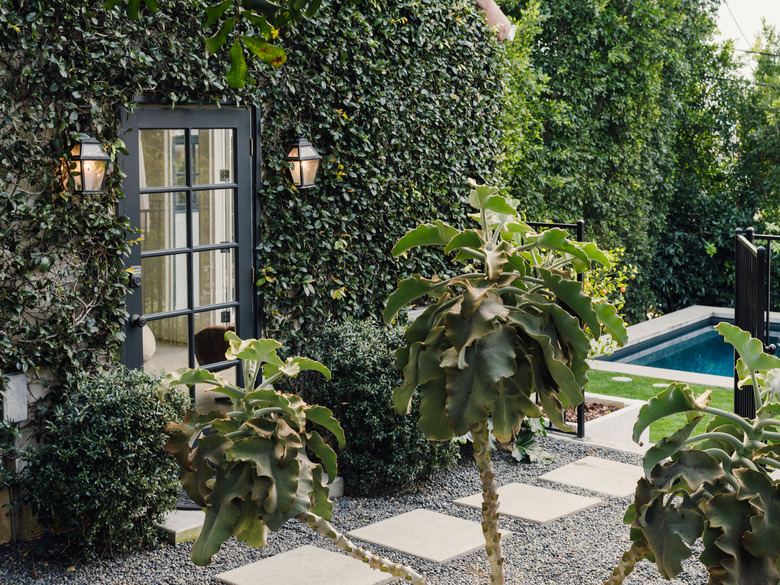Want To Be Good To The Earth? Add These Plants To Your Yard
Every April, the world recognizes Earth Day. What better way to celebrate the Big Blue Marble than by planting something that's beneficial for it?
The last few decades have been hard on the planet with CO2 and temperatures rising, bee populations on the wane, and even bird numbers declining. So, here are some easy-care plants that can assist in helping each of these issues. Pick one (or more) and get gardening today, this weekend, next month ... just do it!
Helping the Bees
Helping the Bees
Are bees important to our planet? You might say that these buzzing insects make the world go round. Some 90 percent of the world's plants must cross-pollinate to reproduce, and bees do the biggest part of the job.
But bee populations everywhere are dropping and climate change is part of the problem. Because the earth is warming, flowers aren't blooming according to their age-old schedules, which means bees lose reliable nectar sources. And bees are dying in great numbers due to plants and seeds treated with neonicotinoid pesticides.
You can help the world with this issue by planting a bee-friendly garden. The more bees, the more healthy plants for humans and wildlife to use for food and shelter. What plants should you bring into your garden to help bees survive and thrive? Here are four plants for four seasons:
- Willows (Salix spp.) produce those fuzzy catkins called pussy willows in spring. The nectar from catkins feeds queen bumblebees as they establish new colonies, and also provides food for different types of mining bees.
- Lavender's bright-purple flowers (Lavandula spp.) perfume the summer air, attracting bumblebees, leafcutter bees, flower bees, and mason bees. These shrubs grow best on a sunny site and thrive in poor soil.
- Honeysuckle (Lonicera spp.) is a flowering vine that climbs high into trees or over trellises. Come fall, their long, tubular flowers offer sweet-scented nectar to bees and moths with long tongues.
- Mahonia (Mahonia spp.) is a low-maintenance evergreen shrub. Its brilliant yellow flowers open in winter and feed overwintering bumblebees and honeybees.
Planting Trees to Absorb Greenhouse Gases
Planting Trees to Absorb Greenhouse Gases
Carbon dioxide (CO2) comes from petroleum-burning vehicles and power plants, and it's a primary cause of global warming. We humans are having a hard time getting rid of the excess CO2, but trees do it naturally. They absorb and store CO2 before it can get far enough out into the atmosphere to do damage. So plant a carbon-storing tree today, one that thrives in your region. Here are a few easy-to-grow trees to try:
- Silver maple (Acer saccharinum) can trap some 25,000 pounds of C02 over 55 years, according to the Center for Urban Forests (just one tree!).
- Tulip tree (Liriodendron tulipifera) wins acclaim as a top carbon-storer that works hard and thrives in any condition.
- Dogwoods (Cornus spp.) are small trees with lovely flowers, and they can store lots of carbon.
- White, Red, Ponderosa, and Hispaniola Pines (Pinus spp.) are the most carbon-effective conifer trees.
Feeding Birds Means Less Pesticides
Feeding Birds Means Less Pesticides
It's not breaking news that chemical pesticides are bad for the planet, killing beneficial insects along with pest bugs and causing health issues for people, too. Birds can help by eating the bad bugs without contaminating soil or food. But with cities growing larger and climates changing, birds are having a hard time finding habitat and food. Anything you plant with berries can help birds, especially when the fruits stay on the branches over fall and winter. Here are four to consider:
- Holly (Ilex spp.) Holly trees are beautiful ornamentals, with shiny leaves and bright berries, but some are also tough natives requiring little maintenance. The red fruit ripens in autumn but remain on the tree deep into winter, providing food for birds including song thrushes, blackbirds, redwings, and fieldfares.
- Ivy (Hedera spp.) Ivy is so much more than just pretty, fast-spreading foliage. It produces flowers in autumn that sing a siren's song to insects and these bugs provide food for birds. The berries ripen in midwinter, when birds are hungriest. They feed jays, blackbirds, thrushes, waxwings, and starlings. As a bonus, foliage provides food for caterpillars and nesting shelter for birds.
- Hawthorn (Crataegus spp.)
Birds love the shiny haws that hang on these trees all winter. You're likely to make blackbirds, greenfinches, redwings, starlings, and chaffinches very happy if you plant a hawthorn. Baby birds eat the leaves in spring.
- Cotoneaster (Cotoneaster spp.) Whether you use this shrub as a hedge plant or a specimen, garden birds will flock to them from autumn through winter for the small red berries.
References
- Premier Tech: 5 Ways Bees Are Important to the Environment
- Gardeners' World: Top 10 Plants for Birds
- Friends of the Earth: Bee-Friendly Plants for Every Season
- A Healthier Michigan: 8 Reasons You Should Plant a Tree for Earth DAy
- Earth Easy: 10 Carbon-Storing Trees and How to Plant Them
- Thoughtco: Which Trees Offset Global Warming Best?


